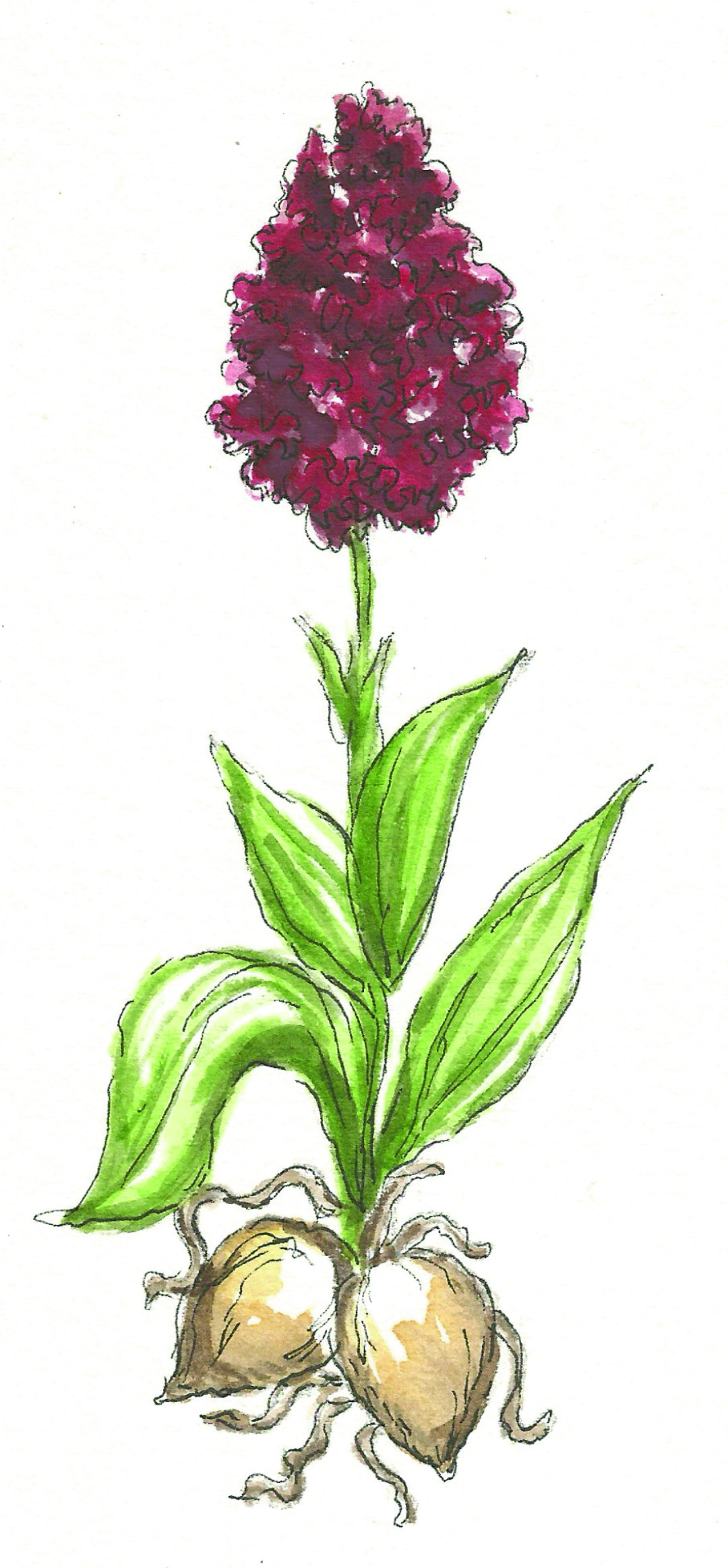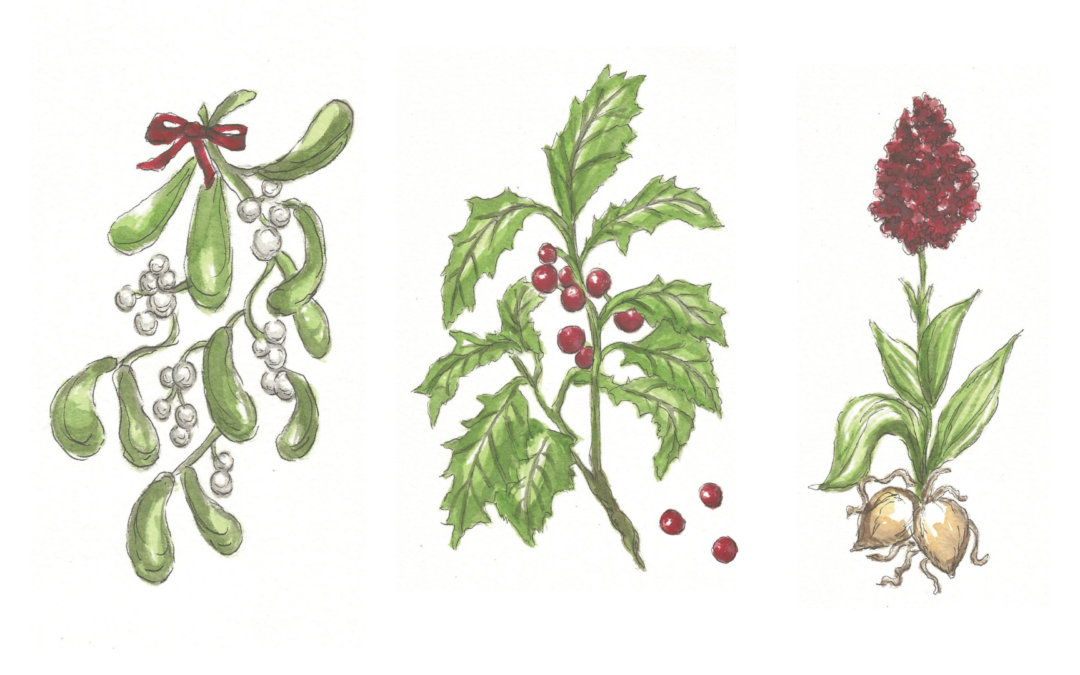Article Provided by Clay 30A | Illustrations by Sheila MacDiarmid
If you have live mistletoe plants in your house this holiday season, be sure to keep them out of reach from young children and pets. Deck the halls with boughs of holly — just don’t eat them!
Many of the plants we associate with the holiday season have a reputation for being poisonous. But which ones are dangerous? How serious is the threat? Should you forgo potentially poisonous holiday plants if you have young children or pets? Experts from the Blue Ridge Poison Center helped separate fact from fiction and offer some safety tips for your family.

Holly
Holly (Ilex species) is a small evergreen tree or shrub with stiff, prickly leaves and red berries. The berries contain toxic compounds that can cause nausea, vomiting, diarrhea, and — in rare cases — drowsiness.
Swallowing 20-30 berries is a toxic dose for adults, although there are reports of people who experience symptoms after swallowing smaller amounts.
Symptoms have been reported in children who swallowed as few as five berries. Young children and pets may be particularly attracted to the bright red berries. The leaves are not poisonous, but they could be a choking hazard.

Mistletoe
American Mistletoe (Phoradendron loranthaceae) has smooth, green oval-shaped leaves and clusters of waxy, white berries. Mistletoe is a parasitic plant.
It grows as a clump clinging to the branches and trunks of deciduous trees throughout the U.S. The entire plant contains toxins that can cause gastrointestinal problems such as nausea, vomiting, and diarrhea if swallowed.
Most cases reported to poison centers in the past 25 years involved young children who ate only a few leaves or berries at most. In those cases, symptoms were either mild or did not develop at all. Severe reactions are less common and associated with eating larger amounts of the plant, especially the leaves.
If young children or pets are going to be present in your home this holiday season, keep mistletoe up high, out of their reach. Stay vigilant for any leaves or berries that drop to the ground, in easy reach of pets.

Bulbs
There are many species of spring-blooming, fragrant plants that grow from a bulb. Several, including amaryllis, paperwhites, daffodils, and hyacinth, have become popular holiday favorites.
We bring dormant bulbs indoors in autumn to encourage full bloom a few months early. These plants may be poisonous, especially the bulbs that look like onions or shallots.
Avoid mistaken identity — store loose bulbs in a safe place, far from food, where children and pets can’t reach.
If eaten, there may be symptoms such as nausea, vomiting, and diarrhea. Some bulb species also contain compounds that can cause burning and irritation of the mouth, throat, and skin.
Did You Know?
Poinsettia (Euphorbia pulcherrima) is a showy shrub with green leaves and “flowers” that are red, white, or pink. The flowers are not true flowers; they’re leaves that changed color. Poinsettias have a reputation for being deadly, but in fact, they’re not poisonous at all.
The plant does contain a sap that can cause minor skin irritation in some people, but your pet would have to ingest nearly an entire plant to be in any danger. This sap can be irritating to the mouth and stomach if swallowed. Also, the large, soft leaves could be a choking hazard for a young child or pets.

